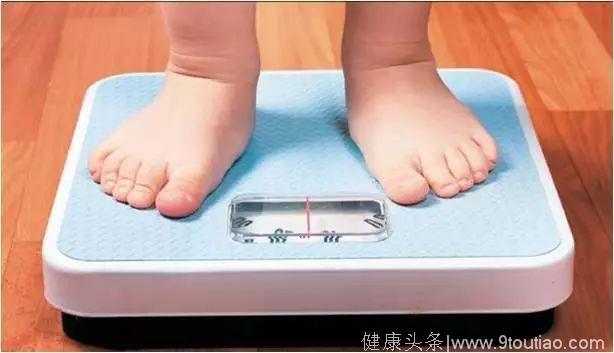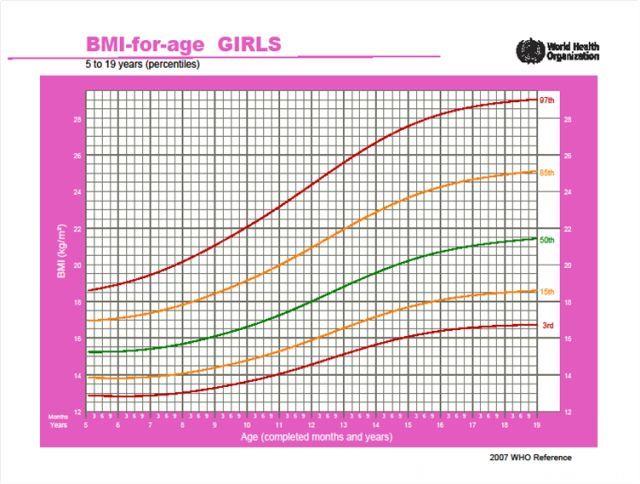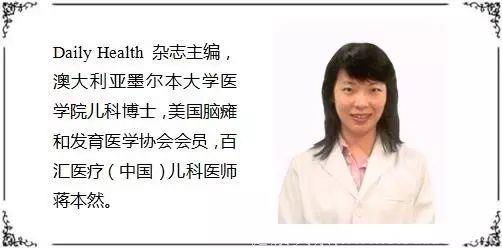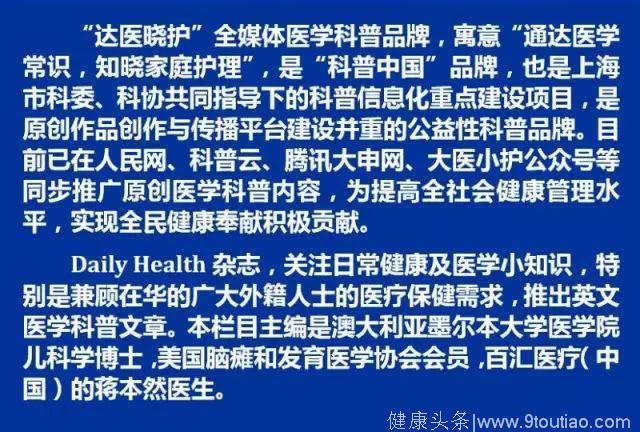对月半Say No!

预防肥胖,得从娃娃抓起。研究发现,成年期肥胖的人常常在儿童期超重或肥胖,而儿童早期和儿童期的正常体重和体重增长速率和成人期肥胖症的低发生率相关。上一期的栏目我们介绍了预防成人期肥胖的2个“关键窗口”,分别儿童早期和青少年时期。 接下来这一期我们就要一起来看看到底怎么样才算是小胖墩,儿童期肥胖的原因和预防方法。
Earlier studies found obese adults are often overweight and obese during childhood. Healthy early childhood body weight and weight gain often link with lower adult obesity rates. Early childhood and adolescence are two "critical windows" for preventing obesity later on. Today we are going to discuss the definition, cause and prevention of obesity.

怎样定义肥胖症或超重?

比标准体重超重几斤并不代表肥胖症,虽然这可能说明一个人容易增重并需要改变饮食和运动的习惯。一般来说,我们通常通过体重与身高之间的关系来评估肥胖,比如身体质量指数(BMI), 这是在 ≥ 2岁的儿童中评价超重及肥胖的公认标准指标。计算公式是BMI = 体重(kg)/ 身高(m)2
What is obesity or overweight?
A few extra pounds does not suggest obesity. However they may indicate a tendency to gain weight easily and a need for changes in diet and physical exercise. Generally, obesity usually is assessed by the relationship between weight and height, for example, the body mass index (BMI), which is the accepted standard measure of overweight and obesity for children two years of age and older. The BMI is defined as the body weight (in kilograms) divided by the height (in meters) squared.
下面就是按BMI数值对2-18岁儿童的体重状态进行分类,让我们先对号入座一下家里的宝贝属于哪个范围:
● 体重低下–按年龄和性别划分,BMI <第5百分位数
● 体重正常–按年龄和性别划分,BMI位于第5和第85百分位数之间
● 超重–按年龄和性别划分,BMI位于第85和第95百分位数之间
● 肥胖–按年龄和性别划分,BMI≥第95百分位数
● 重度肥胖–BMI≥第95百分位数的120%,或者BMI≥35 kg/m2
The following definitions categorize weight status for children between 2 and 18 years old by using BMI:
●Underweight – BMI <5th percentile for age and sex
●Normal weight – BMI between the 5th and <85th percentile for age and sex
●Overweight – BMI between >85th and 95th percentile for age and sex
●Obese – BMI ≥95th percentile for age and sex
●Severe obesity –BMI ≥120 percent of the 95th percentile, or a BMI ≥35 kg/m2
附录一下WHO制定的按年龄性别的BMI生长标准图


引起肥胖的原因有哪些呢?
最基本的原因是摄取的热量超过消耗的热量。引起肥胖的因素是综合性的,包括环境因素,比如饮食,行为,睡眠,药物等,以及遗传和内分泌疾病影响。其中环境因素越来越被重视,几乎所有儿童肥胖都受到环境因素的强烈影响,已经成为肥胖的干预治疗肥胖症的重要指标。遗传因素也已经被证实是与环境因素一起相互作用导致肥胖的原因之一。关于内分泌疾病,虽然会造成肥胖,但这些因素只占肥胖症儿童的1%不到,比如皮质醇过多,甲状腺功能减退症,生长激素缺乏,会同时伴随身材矮小和/或性腺功能减退症。这些疾病通常会引起超重或轻度肥胖,而不是重度肥胖。因此下文就先根据环境因素着重展开讨论肥胖的防治策略。
What causes obesity?
Obesity occurs when a person eats more calories than the body burns. The causes of obesity are complex and include environmental factors, such as diet, behavioral, sleep, and medicine, and genetic and biological factors. Environmental factors become important factor for intervention and research. Almost all obesity in children is strongly influenced by environmental factors. There is strong evidence that genetic factors are interacted with environmental factors to produce obesity. Although certain medical disorders can cause obesity, less than 1 percent of all obesity is caused by physical problems, including cortisol excess, hypothyroidism, and growth hormone deficiency. Most children with these problems have short stature and/or hypogonadism. These conditions usually are cause overweight or mild obesity rather than severe obesity. We will discuss the cause and prevention from the aspects of environmental factors.
如何从环境因素下手
来管理儿童及青少年减肥呢?
1.饮食
含糖饮料
研究发现饮用含糖饮料(包括果汁)是引起龋齿和部分个体肥胖的重要原因。饮用含糖饮料也会导致主要营养素的摄入量较低(比如蛋白质和钙),因为含糖饮料常常会替代牛奶的饮用。所以不应鼓励饮用软饮料和其他含糖饮料(如果汁, 运动饮料,加味水)。应选用普通的水作为儿童正餐和零食以外摄入的液体的优先选择。美国儿科学会也明确建议不给予1岁以下婴儿喝果汁,除非有临床医疗需要。对于1岁到3岁的幼童,每天的果汁摄入应该少于在4盎司(115毫升),4到6岁的学龄前儿童则应该限制在4-6盎司(115-170毫升)。对于7到18岁的儿童,建议的每日限定量为8盎司(220毫升)。

三餐食物选择
计划三餐饮食并选择较健康的食品,吃较少油的食物,避免垃圾食品或快餐食品,并了解孩子在学校吃些什么,以帮助规划平衡的膳食。多种色彩的水果和蔬菜有益于健康,可以安排餐桌上有各种颜色食物。和孩子一起数一数,今天餐桌上有哪些颜色,有没有彩虹颜色。

好好吃早饭
不吃饭或少吃一餐都对控制体重没有帮助。特别是早餐,不吃早餐反而会肥胖。如果是因为早上去学校赶时间而少吃或不吃的话,我们可以准备一些健康的快手早餐或者可以便携的餐食,比如混合坚果和果干的谷物麦片,面包,蛋饼,包子,三明治等。

把健康食物放在触手可及的地方
建议把饮用水,水果,蔬菜小食,以及其他低卡路里的小吃零食放置在任何时候都能发现和触手可及的地方。比如,冰箱前端较低的搁板上,厨房台面或餐厅桌上的大碗里. 别忘了把饼干罐收起来,取而代之以色彩鲜艳的水果盘。


控制进食量和摄入的卡路里
对于进食过多的孩子,特别是高卡路里的食物,可以减小勺子,碗和盘子的尺寸。外出到餐馆享受美食时,也要注意食物的分量是否过多,可以考虑吃完部分,然后外带部分回家。
让孩子做个小小厨神
准备食物时可以让孩子一起参加,做个小帮手,从力所能及的事情做起。比如拣菜,挑选一个配菜,混合蔬菜色拉, 递个调料,帮助腌渍,拿个盘子之类。小帮手的角色扮演会让孩子对自己参与准备的健康食物很自豪和期待,更愿意好好地进食。

教会孩子细嚼慢咽
过快的进食会导致进食过多,从食物进入口腔到大脑发出已经吃饱的信号大概需要15-20分钟,所以吃的太快容易导致肥胖。另外,也会引起消化不良和食物营养吸收不佳。所以要慢慢的改变饮食习惯,放慢吃饭速度,细嚼慢咽。

进餐环境
与家人一起进餐, 营造轻松,愉快, 舒适的环境和氛围,而不是边看电视或电脑时进餐。 研究发现边看电视边进食会导致吃的过多及消化不良。和家人一起就餐也正是大家一起交流增进感情和亲子关系的好机会, 同时家长也可以抓住这个以身作则,多吃健康食物,为孩子做个好榜样。
不能用零食或食物来作为奖赏或惩罚
比如用冰淇淋,巧克力或者是薯片来奖励孩子好的行为,或者以不给孩子吃他喜欢的某种食物,作为惩罚他的不良行为。

1. Food:
• Sugar-sweetened beverages:
It has been found that drinking sugar-sweetened beverages (including fruit juice) is an important contributor to the development of obesity. Sweetened beverage is also associated with lower intake of key nutrients (protein and calcium) because it is often consumed instead of milk. It is not encouraged to have soft drinks or other sweetened beverages (eg, fruit juices, energy drinks and flavored water). Plain water is the preferred beverage for children when fluids are taken apart from the meals and snacks. American Academy of Pediatrics (AAP) recommends no fruit juice for infants before 1 year old unless clinically indicated. Daily intake should be limited to 4 ounces in toddlers ages 1-3 years, 4-6 ounces for those 4-6 years. For those 7-18 years, limit juice intake to 8 ounces per day.
• Choose the right food:
Plan meals and make better food selections (eat less fatty foods, avoid junk and fast foods); know what your child eats at school to help planning balanced diet. The more colors on dinner table the healthier, so make it a game or competition and have kids count how many colors are on their plates.
• Have breakfast.
Skipping meals is not helpful for weight control, especially breakfast, which has been associated with obesity. If mornings rush hours are the reason for skipping breakfast, we can try to look for healthy on-the-go breakfast options.
• Make healthy food easily accessible:
It is suggested to have plain water, fruits, vegetable snacks, water, fruits, vegetable snacks, and the other low-calorie snacks available at all times and places easy accessible. For example, these healthy foods can be placed on the lower shelves in the front of the refrigerator or in large bowls on the kitchen counter or dinner table. Replace the cookie jar with a fruit bowel.
• Control portion sizes and consume less calories:
Use a smaller sized serving spoon and smaller plates to help children take appropriate servings of higher calorie foods. When you go out to eat as a family, recognize the portion sizes and discuss eating half and taking the other half home to enjoy later.
• Master chef junior
Invite your kids to cook together. It can be started as a helper, for example, choose the vegetables for meals, mix the bowl, add ingredients or seasonings to the dishes while cooking, or marinate. Kids are very proudly of being helpers and they will be more likely to eat what they helped create.
• Eating slowly
Eating too fast results in taking in too many calories before they realize they've eaten enough. It takes about 15 to 20 minutes before the brain realizes that the stomach has received enough food and you don’t need any more. In addition,speedy eating will also cause indigestion and less nutrition absorption. Change eating habit is need for speedy eaters. Teach kids to slow down, take smaller bits, and chew really well before swallowing.
• Making family meals enjoyable and pleasant
Eat meals as a family and make it relax, enjoyable and pleasant, instead of while watching television or at the computer. Data have shown that we consume more food and indigestion when watching TV or than those who do not. Family meals are perfect times to catch up, connect and communicate with each other. It also helps children learn to eat the same healthy food as parents do.
• Avoid using food as a reward or punishment
For example, give ice cream, chocolate, chips as a reward encouraging good behavior; or restricting food for bad behavior.
2. 电视, 电子游戏及其他屏幕时间
有研究发现看电视所花费的时间都与儿童及青少年的肥胖患病率直接相关。看电视是引起儿童期肥胖的重要环境因素。因为电视取代了体力活动,减少了能量代谢和消耗,而且还会影响睡眠。根据美国儿科学会推荐,每天的屏幕时间少于1到2小时。

2. Screen time
Research has shown that the amount of time spent in watching television is directly related to the prevalence of obesity in children and adolescents. Watching TV is an important environmental influence on the development of childhood obesity. It replaces physical activity, decreases metabolic rate, and has a negative impact on sleep quality. The AAP recommends limiting screen time to 1 to 2 hours or less per day.
3. 体育活动
随着学习课业的加重,能花在正规的体育运动上的时间日渐减少。其实寻找一个积极运动的生活方式,在日常生活中增加体育活动量也不是一件难事,比如,和父母一起散步,双休日找个时间近郊野外徒步,自行车旅行,户外游戏活动等,都是不错而且容易做到的。争取做到每天60分钟的体育活动。

3. Physical activity
Busy studies make it difficult for children to find time to exercise. Increase physical activity and have a more active lifestyle actually is not so hard. For example, walking with parents, weekend hikes, bicycle trips, outdoor games and activities are all easy accessible. Get 60 minutes or more of physical activity a day.
4. 睡眠
已经有大量的研究证据提示显示睡眠时间不足和肥胖有关。保证充足的睡眠时间可以减少肥胖的风险。父母可以采用“睡前仪式”帮助孩子养成良好的睡眠习惯,不要在孩子的卧室放置电视机,收音机,电脑,智能手机和其他屏幕设备。规定讲睡前故事的时间长短和熄灯时间。(如果对睡眠时间长短这个话题感兴趣,请参照20171022 大医小护 Daily Health 栏目的文章《什么?家里的学生娃睡眠不足,以后容易得糖尿病?我读书少,你不要吓我!》)

4. Sleep
Abundant evidence indicates shortened sleep duration is related with obesity. Get enough sleep may reduce the risk of obesity. Parents can encourage good sleeping habits by forming a night time routine. Keep televisions, radios, computers, smartphones and other screens out of kids' bedrooms. Be sure to set clear limits for such as what time lights must be turned off and how long bedtime stories you will read.
作者:澳大利亚墨尔本大学医学院儿科博士
百汇医疗(中国)儿科医师
蒋本然


部分图片摘自网络,如有侵权请告知,予以删除。